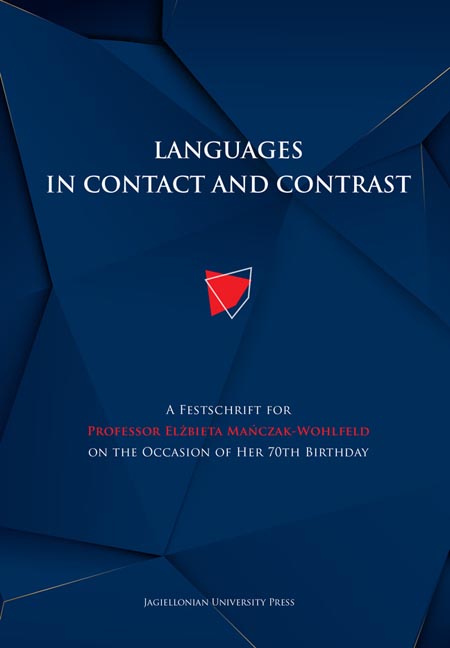 Languages in Contact and Contrast
Languages in Contact and Contrast Published online by Cambridge University Press: 14 October 2023
Introduction
This study aims to analyse pseudo-anglicisms in Japanese within the context of global anglicisms, suggest their classification and discuss the number and characteristics for each category. Pseudo-anglicisms in European languages have drawn scholarly attention in recent years because of the diversity and complexity involved in the formation process. Japanese also has an abundant usage of pseudo-anglicisms and the concept of pseudo-anglicism has long been discussed as waseieigo, which can be translated literally as “English made in Japan”, or loosely, pseudo-anglicism. However, there is minimal in-depth study of the structures and formation of waseieigo or pseudo-anglicisms in Japanese. Analyses within the context of global anglicisms will not only elaborate on the characteristics of pseudo-anglicisms in Japanese but also reveal the sociolinguistic factors involved in their formation.
Terminology: waseieigo and pseudo-anglicism
As this study analyses words classified as waseieigo in existing dictionaries, it is first necessary to discuss the differences between the terms waseieigo and pseudo-anglicism. Kobayashi (2009) defines waseieigo as “a loanword that appears to be from an English-speaking country but is newly created in Japan and not used in the same way in the country of origin” (Kobayashi 2009: 59; translation by K.I.). Words are generally labelled as waseieigo in dictionaries based on whether or not native English speakers understand (comprehensiveness) or use them in the same form and meaning (correctness). Such an approach is also common in labelling pseudo-anglicism. Furiassi (2010) and Gottlieb and Furiassi (2015) suggest that a pseudoanglicism can be detected “if the supposed borrowing from English is felt by the native speaker to need substitution – since it is not understood or looks/sounds inappropriate – it is considered a false anglicism”. In this regard, pseudo-anglicism and waseieigo are almost interchangeable. They are also similar in the fact that what is included for each term varies greatly depending on the individual scholar.
This study analyses pseudo-anglicism in Japanese based on the definition: “a false or pseudo-loan or anglicism is a word or multi-word unit in the RL [recipient language] made up of English lexical elements but unknown or used with a conspicuously different meaning in English” (Pulcini et al. 2012: 7).
To save this book to your Kindle, first ensure [email protected] is added to your Approved Personal Document E-mail List under your Personal Document Settings on the Manage Your Content and Devices page of your Amazon account. Then enter the ‘name’ part of your Kindle email address below. Find out more about saving to your Kindle.
Note you can select to save to either the @free.kindle.com or @kindle.com variations. ‘@free.kindle.com’ emails are free but can only be saved to your device when it is connected to wi-fi. ‘@kindle.com’ emails can be delivered even when you are not connected to wi-fi, but note that service fees apply.
Find out more about the Kindle Personal Document Service.
To save content items to your account, please confirm that you agree to abide by our usage policies. If this is the first time you use this feature, you will be asked to authorise Cambridge Core to connect with your account. Find out more about saving content to Dropbox.
To save content items to your account, please confirm that you agree to abide by our usage policies. If this is the first time you use this feature, you will be asked to authorise Cambridge Core to connect with your account. Find out more about saving content to Google Drive.